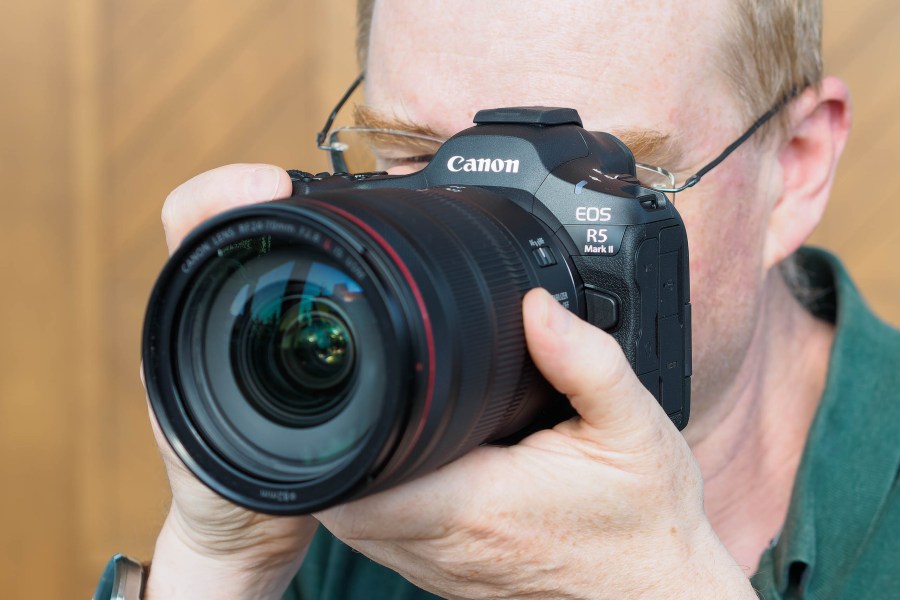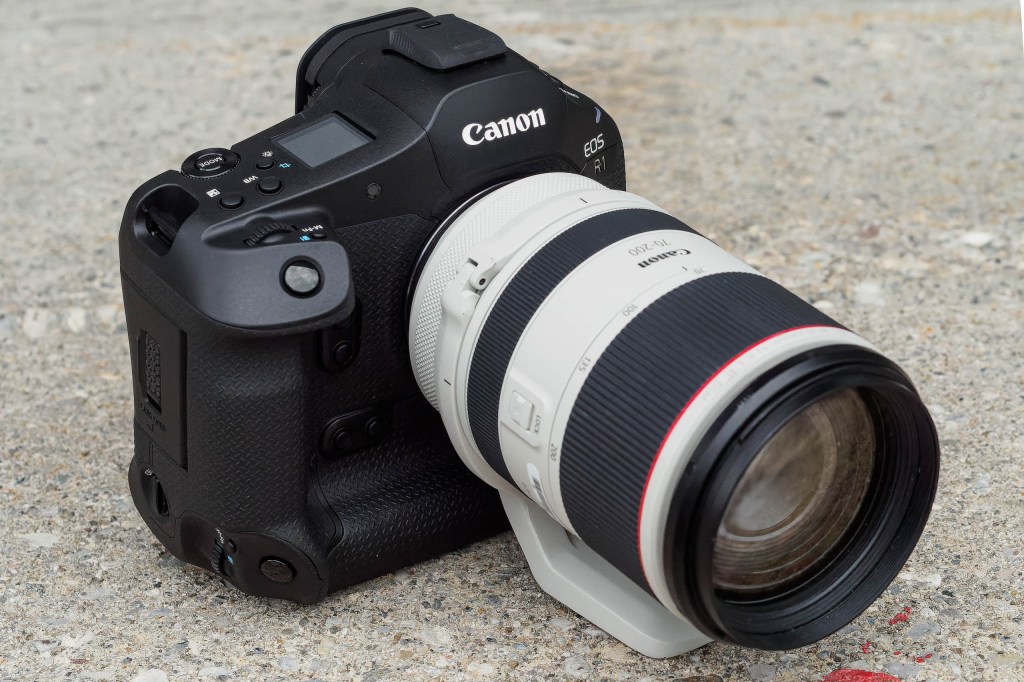My guide to the best Canon cameras is mostly a guide to the best Canon mirrorless cameras with a few exceptions made for the best compacts. Other than that, Canon’s finest cameras sit in its EOS R mirrorless range. Whether you’re a seasoned pro or a total novice when it comes to photography and video, there will be an excellent Canon camera for you, and as such, I’ve used the AP review team’s testing experience to put together this list covering the whole spectrum.
As such, this list includes my top recommended Canon cameras for beginners, enthusiasts and pros, with options for different budgets and use cases. I’ve drawn on the insights of AP’s technical team when making my picks, and you can also see sample images throughout to get a sense of what these cameras can do. You can also scroll to the bottom of this page for an explainer on technical terms, as well as answers to a few of the questions we most commonly get asked about Canon cameras.
For more great Canon gear, check out our handy guide to Canon RF-mount lenses, and if you want more choices from other brands, we also have a run-down of the best full-frame mirrorless cameras.
Best Canon cameras: our quick list
Here’s a quick list of our picks for the best Canon mirrorless cameras, as well as links to the best current prices:
- Best Canon camera overall: Canon EOS R5 II – Buy now
- Best all-rounder Canon camera: Canon EOS R6 Mark II – Buy now
- Best professional Canon camera: Canon EOS R1 – Buy now
- Best high-res Canon for stills: Canon EOS R5 – Buy now
- Best Canon for beginners: Canon EOS R50 – Buy now
- Best budget full-frame Canon: Canon EOS R8 – Buy now
- Best high-speed APS-C Canon: Canon EOS R7 – Buy now
- Best Canon camera under $1000: Canon EOS R10 – Buy now
- Best budget all-round Canon camera: Canon EOS R6 – Buy now
- Best compact Canon for stills: Canon G7X Mark III – Buy now
- Best compact Canon for video: Canon Powershot V1 – Buy now
Looking for the best deal on Canon cameras? Not only will you find the best Canon cameras, but you’ll also find some of the best Canon camera deals, as our ‘Buy now’ buttons are set to automatically take you to the best prices, from trusted retailers, plus you’ll also find a list of other retailers below each camera, so you can find the right deal for you.
Why you can trust Amateur Photographer
We spend many hours testing every product we recommend, in detail, in a variety of situations and shooting scenarios, and only use experts for our reviews, so you can be sure that you’re getting the best products. Find out more about our expert writers.
BEST CANON OVERALL
Best Canon camera overall: Canon EOS R5 II
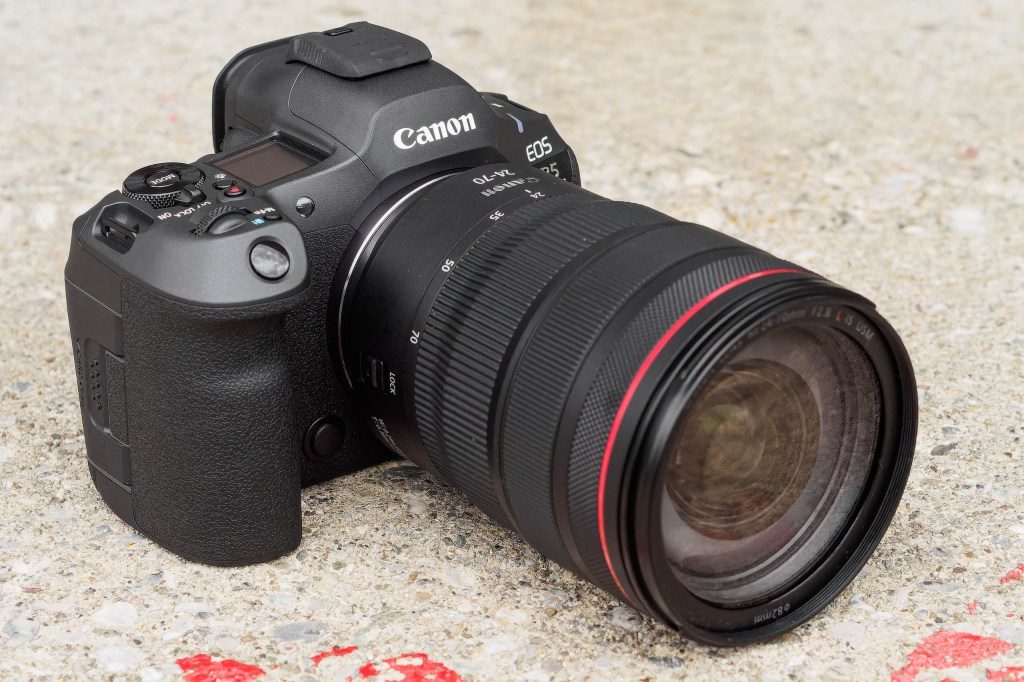
Amateur Photographer verdict
The Canon EOS R5 Mark II stakes a strong claim to be the best professional high-resolution, high-speed all-rounder on the market. The addition of eye control focus elevates it from its rivals, too.- Excellent handling
- Incredible subject detection AF
- Eye Control Focus
- Great image stabilization
- Not compatible with some third-party LP-E6 batteries
- Eye control may not work well for everyone
- Pro-level price
Specifications at a glance:
| Sensor | 45MP stacked CMOS sensor |
| Continuous shooting | 30 fps |
| Autofocus | Eye Control Focus |
| ISO | 50-102,400 (extended) |
| Image stabilisation | 8.5 stops |
| Video | 8K 60fps internal raw recording |
The R5 has been one of Canon’s best high-resolution full-frame mirrorless cameras. It boasted impressive specs but had some issues with overheating during high-res video recording. The EOS R5 II addressed this problem and further improved the video specs and overall performance of this otherwise stellar full-frame powerhouse.
The R5 II has the same megapixel count as its predecessor, but now it’s equipped with a new back-illuminated stacked-CMOS sensor, that is said to reduce rolling shutter by 60%. It also received a new DIGIC X processor that enables new autofocus features, faster video shooting, and more responsive operation.
The impressive Eye Control Focus technology, previously seen in the EOS R3 detects where you are looking in the viewfinder and then automatically focuses on that subject. Another new autofocus feature ‘Action Priority’ autofocus has ball tracking and recognises ‘action poses’ in football, basketball, and volleyball. It also registers up to ten faces that it will prioritise focusing on, and it even lets you arrange them in order of priority.
Now, for the video specs, Canon made sure to bulk up in this area, fixing the overheating issue by adding an internal heat dissipation channel and for those who plan to put it through even more demanding use there is an additional cooling fan grip. The R5 II records internally in 8K 60fps using Canon’s proprietary SRAW format. Another new feature is proxy recording where a low-resolution file can be simultaneously recorded to the second memory card for easier editing. There’s also a new dual still/video shooting function, in which it’s possible to record Full HD video to one memory card and still images to the other at the same time.
In our full review we’ve found that “for any photographers still using 5D-series DSLRs, the EOS R5 Mark II is a massive step forward. Even for existing EOS R5 users, there’s plenty here to make it worth considering upgrading.”
Read our full review of the Canon EOS R5 II.
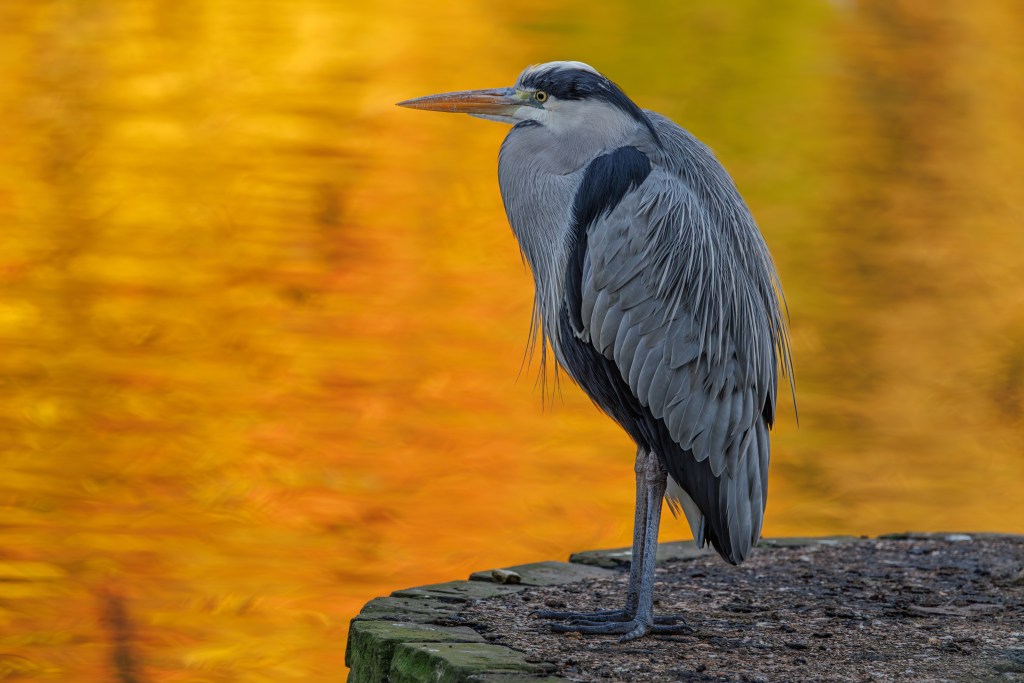
BEST ALL-ROUNDER
Best full-frame all-rounder: Canon EOS R6 Mark II

Amateur Photographer verdict
A seriously impressive jack of all trades, with a large, deep handgrip, extensive external controls and excellent image quality.- Fast burst mode and deep buffer
- Highly capable autofocus
- Excellent in low light
- Inevitable price bump over original R6
- No 8K or 6K video
Specifications at a glance:
| Sensor | 24.2 MP full-frame sensor |
| Continuous shooting | 12 fps (mechanical)40fps (electronic shutter) |
| Autofocus | Subject recognition AF |
| ISO | 50-204,800 (expanded) |
| Image stabilisation | 8 stops |
| Video | 4K 60p |
The original Canon EOS R6 was a big hit with a lot of users and reviewers, including us. It was a quieter launch than the Canon EOS R5, but arguably a more successful one, fielding a lower-resolution sensor for a more reasonable price tag. It was the quintessential full-frame all-rounder – and the EOS R6 Mark II very sensibly builds on that formula to deliver an even better jack-of-all-trades for enthusiast photographers and videographers.
The biggest addition is the new 24.2MP Dual Pixel CMOS AF II, which ups the resolution from a slightly stingy 20MP on the original. It’s not a stacked type as with the sports-focused cameras like the EOS R1, so you don’t get those ultra-fast readout speeds. However, it is optimised to deliver exceptional low-light performance, with a standard ISO ceiling of 102,400, extendable to 204,800; supporting autofocus in light levels as low as -6.5EV.
The EOS R6 Mark II does inherit one thing from the top-end sports cameras, however – that freakishly powerful subject-detect autofocus that can lock onto specific targets: everything from humans and animals to cars and trains. This provides real versatility to a photographer.
In our review, we were particularly impressed by the value for money offered by the EOS R6 Mark II. Its launch price was $1,999 / £1,999 body-only – actually less than the original EOS R6 – and since then it’s been common to see a couple of hundred knocked off the price, particularly in the UK. This also makes the EOS R6 Mark II a tempting option compared to mirrorless full-frame rivals from other brands, like Sony’s A7 IV. While you couldn’t call it a cheap camera, the EOS R6 Mark II definitely represents excellent value for how much functionality you get. Sure, the 24.2MP resolution is low by some standards, but unless you want to make very large prints, it’s realistically going to be plenty.
I can safely say that the Canon EOS R6 Mark II is one of the best cameras for amateur and enthusiast photographers who want to capture all kinds of different subjects.
Read our full Canon EOS R6 Mark II review
Best for: enthusiast photographers
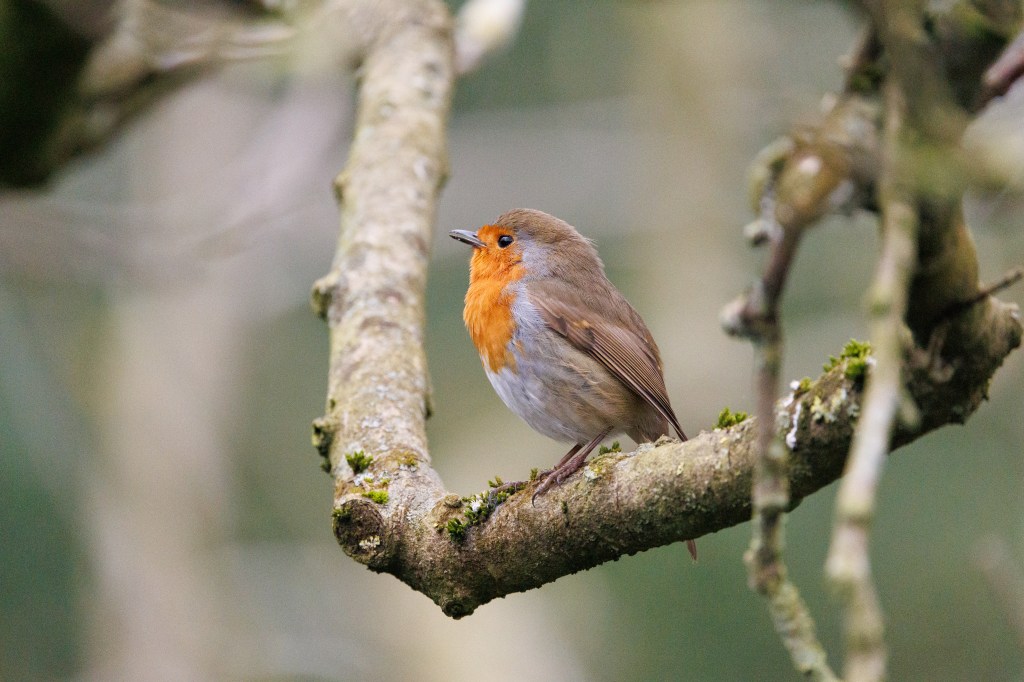
BEST PROFESSIONAL
Best professional Canon camera: Canon EOS R1
Amateur Photographer verdict
A superb camera in its niche at the top-end of sports and action photography. Super-fast, built like a tank and very expensive, it’s one for the pros.- Robust build and excellent control setup
- Superb viewfinder
- Lightning fast shooting
- Eye control focus
- Works seamlessly with EF-mount SLR lenses
- Eye-watering price
- Large and heavy
- Slightly compromised dynamic range
Specifications at a glance:
| Sensor | 24MP stacked CMOS full-frame sensor |
| Continuous shooting | 40 fps with electronic shutter |
| Autofocus | Eye control focus |
| ISO | 50-409,600 (extended) |
| Image stabilisation | 8.5 stops |
| Video | 6K 60p |
Designed for professional sports and action photography, the Canon EOS R1 is the firm’s first mirrorless model to sport its flagship “1-series” designation. Announced in mid-2024 alongside the 45MP EOS R5 Mark II, it can shoot 24MP stills at up to 40 frames per second, record 6K raw video at 60fps, and has a large body with an integrated vertical grip. In many ways, it can be seen as a fully pro-spec update to the Canon EOS R3 from 2021.
The EOS R1 employs a 24MP stacked-CMOS sensor, yet differs from the unit in the EOS R3. The big first difference is in its implementation of Canon’s dual-pixel CMOS AF, where every sensor pixel is split into two for phase detection autofocus. In Canon’s other cameras, each pixel is split into left/right pairs, but in the R1, alternate green pixels are split vertically instead. This enables cross-type focusing, which should help the R1 to focus in certain situations where other cameras might fail.
Some new autofocus features reflect the EOS R1’s particular specialisation for action and sports. The Action Priority mode, which initially works for football, basketball, and volleyball. It employs ball tracking and an understanding of certain ‘action poses’ to determine when to switch focus between the players. With soccer, for example, it’s designed to recognise and prioritise such things as ‘save by keeper’ and ‘sliding tackle’. This defines it really as one for professionals.
Read our full Canon EOS R1 review
Best for: action and sport photography
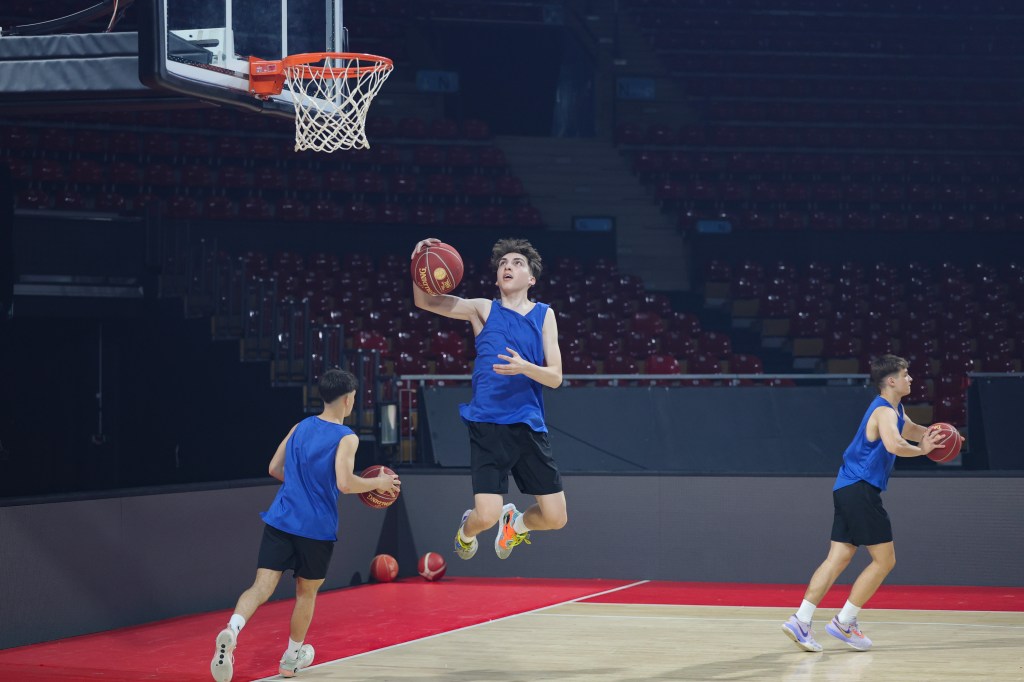
BEST FOR STILLS
Best high-res for stills: Canon EOS R5

Amateur Photographer verdict
While it’s had some much-publicised video issues, as a stills camera the EOS R5 is still impressive, and offers high-res modes lacking in the Mark II.- Stunning EVF
- Ultra-high resolution with 400MP composite mode
- Impressive video spec
- Overheating compromises video usefulness
- Expensive
Specifications at a glance:
| Sensor | 45MP Dual-pixel CMOS full-frame sensor |
| Continuous shooting | 20fps |
| Autofocus | Subject recognition AF |
| ISO | 50-102,400 (extended) |
| Image stabilisation | 8 stops |
| Video | 8K 30p |
The Canon EOS R5 is a camera that has become famous: for good reasons and bad.
The good
For stills photographers, this is a hugely impressive camera. Until the EOS R5 Mark II arrived, it was quite possibly the most sophisticated camera Canon had ever produced, and it’s still up there. With a pioneering 45MP full-frame Dual Pixel CMOS sensor, it can shoot full-res stills at up to 20fps, silently, with full AE and AF tracking.
As well as the high native resolution of that sensor, the EOS R5 also offers the option to merge multiple shots in High Resolution Shot mode to create a massive 400MP file, shifting the sensor using the stabilisation system between a total of nine exposures. While this naturally doesn’t work with moving subjects, it opens up interesting possibilities for landscape, still-life and architectural photography – and it’s worth noting that the more recent EOS R5 Mark II does not have this feature, as it instead relies on AI-powered in-camera upscaling.
As mentioned, it packs in-body image stabilisation (IBIS) with up to 8 stops of effectiveness when paired with compatible Canon lenses. The autofocus works down to -6EV in low light, meaning it can still focus accurately even when you’re stopped down to f/22, and it incorporates Canon’s deep-learning subject-recognition AI technology.
Ergonomically, the EOS R5 is a treat, with high-quality construction, dual card slots and thoughtfully laid-out controls. The 5.76m-dot electronic viewfinder is bright and super-smooth, delivering first-rate performance, and the 3.2in, 2.1m-dot fully articulated touchscreen is slim, sensitive and smooth. All top stuff. So what’s not to like?
The bad
Well, the Canon EOS R5 is also a video beast, able to shoot DCI 8K Raw video internally using the full width of the sensor, with the option of broadcast quality 4:2:2 10-bit output and the Canon Log profile. However, this recording has severe time limits due to heat build-up. It’s specified to manage up to 20 minutes in 8K before needing to cool off; in our testing, we managed 17 minutes and 21 seconds.
Knocking it to 4K 120p recording, we managed just four minutes before the overheating icon appeared. There’s also the fact that the camera requires lengthy cool-off periods between these recordings, which just isn’t practical on a busy video set. Canon, clearly aware of this, quite hurriedly brought out the EOS R5C to address these issues. For pure video shooters, this latter camera is the smarter buy. Then of course, the EOS R5 Mark II arrived, with its smart heat dissipation features and optional cooling fan.
Even now that the successor has arrived, the EOS R5 is an undeniably expensive camera – even more so when you consider the cost of the L-series RF-mount lenses required to get the best out of it. However, if you have the budget and prioritise stills over video, this is still a hell of a camera.
Read our Canon EOS R5 review for more
Best for: photographers who need ultra-high resolution
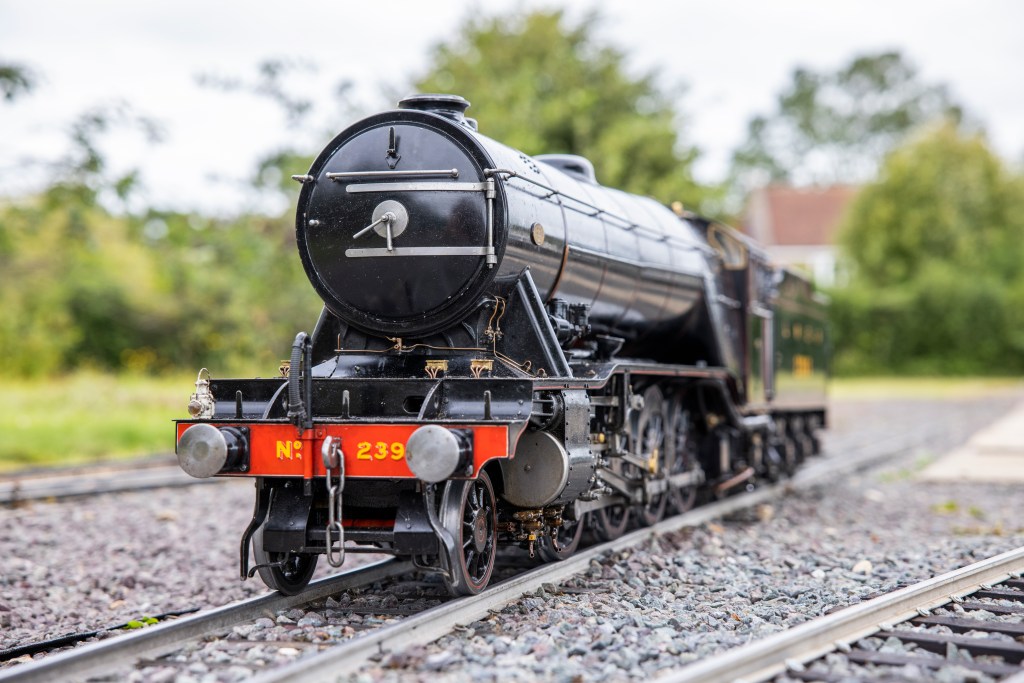
BEST FOR BEGINNERS
Best Canon for beginners: Canon EOS R50

Amateur Photographer verdict
It’s small and light yet comfortable in your hand, It also delivers consistently attractive JPEGs. Its strongest selling point is the brilliant subject recognition autofocus.- Best-in-class autofocus
- Snappy burst shooting
- Nice and lightweight
- Very limited RF-S lens range
- Small viewfinder
Specifications at a glance:
| Sensor | 24.2MP APS-C sensor |
| Continuous shooting | 15fps with electronic shutter |
| Autofocus | Subject recognition AF |
| ISO | 100-51,200 (extended) |
| Image stabilisation | No |
| Video | 4K 30p |
Initially, I thought the Canon EOS R50 would be the Canon EOS R mirrorless camera for beginners, but the subsequent arrival of the cheaper and more basic Canon EOS R100 complicated that picture. However, having spent time with both cameras, I’d say that if you can afford the extra outlay for the EOS R50, it’s a much more fully-featured camera for beginners to learn the basics on.
It’s a nice and light camera, with a standard 24.2MP APS-C sensor and a fairly generous (for this level) ISO range that goes up to 32,000 natively, or can be expanded to 51,200. Of course, some of this is little more than marketing – as we found in our review, it’d be a very rare situation where you’d want to push this beyond 25,600, as you simply don’t get very useable images at these higher settings. But this is still a decent showing for a camera of this type.
What’s more exciting though – and really sets the EOS R50 apart from the inferior EOS R100 and many other cameras around this price – is its fantastic subject recognition autofocus. Inherited from the more expensive professional camera, this intelligent system can recognise and track focus on specific subject types (people, animals and vehicles). This pairs beautifully with the surprisingly clippy burst rate – 12fps, or 15fps with the electronic shutter.
All in all, this is one of the most capable and versatile cameras in this price bracket. It’s still somewhat hobbled by the meagre selection of RF-S lenses, a problem that Canon doesn’t seem to be in a rush to correct. You can get by with EF-S lenses and an EF-EOS R adapter, though the latter will add an extra £100 / $100 approx. to your costs.
Read our full Canon EOS R50 review
Best for: Beginners

BEST BUDGET FULL-FRAME
Best budget full-frame Canon: Canon EOS R8
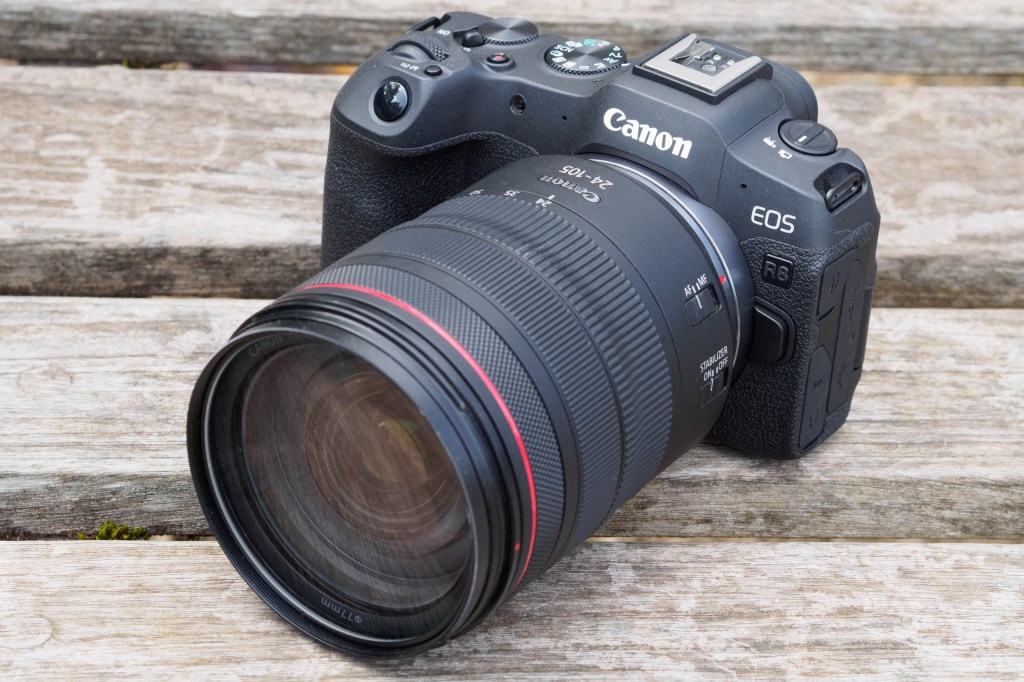
Amateur Photographer verdict
While the EOS R8 isn’t aimed at advanced users, you just can’t argue with the results. For the price especially, the autofocus is class-leading.- Absolutely superb autofocus at this price point
- Delivers sublime images straight out of camera
- Lightweight build
- Over-simplified body design with few physical controls
- No in-body stabilisation
Specifications at a glance:
| Sensor | 24.2MP CMOS full-frame sensor |
| Continuous shooting | 40 fps with electronic shutter |
| Autofocus | Subject detect AF |
| ISO | 50-204,800 (extended) |
| Image stabilisation | No |
| Video | 4K 60p |
Canon provided a welcome upgrade for the ageing Canon EOS RP in the form of the Canon EOS R8. At first glance, it looks much the same, with a similar body size, and a full-frame sensor of about the same resolution. So what’s the difference?
Well, Canon packed in the fantastic subject-detect autofocus system from the high-end Canon EOS R6 Mark II, giving it one of the most reliable autofocus systems of any camera around its price. It uses Canon’s Dual Pixel CMOS AF sensor to lock on quickly and accurately anywhere in the frame. And thanks to that AI-powered subject-detection, it can recognise subjects like humans, animals and vehicles and keep hold of them even as they move. Focusing basically becomes something you no longer have to think about.
The Canon EOS R8 really is just a camera that nails the shot, again and again. Thanks to Canon’s well-judged in-camera processing, it produces JPEGs good enough to share straight out of camera, punchy and sharp with fantastic colours.
As we found in our review, the compromises with the EOS R8 mostly concern build and handling. The EOS R8 skates by with very few physical controls, necessitating some menu fiddling to get to grips with its settings. There’s only one card slot, and the LP-E17 battery is unusually small for a camera in this class, rated to just 220 shots (in practice you’ll probably get a few more, but you’ll still definitely want a spare). Also, be aware that there’s no in-body stabilisation, so you’ll be relying on the systems built into the lenses.
Read our full Canon EOS R8 review
Best for: upgrading into full-frame

BEST HIGH-SPEED APS-C
Best high-speed APS-C Canon: Canon EOS R7
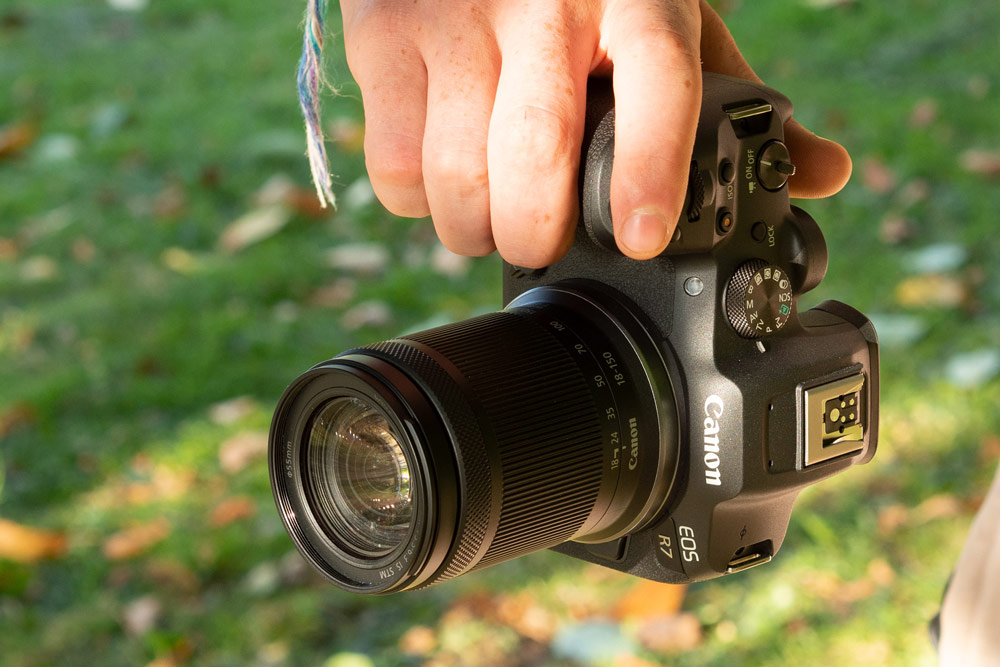
Amateur Photographer verdict
Whether you’re looking for a camera for stills or video, the high-speed and high-quality output of the R7 certainly makes for an appealing camera.- High-speed, high-resolution
- Compact, weather-sealed body
- In-body image stabilisation
- Limited RF-S lenses
- And the kit lens isn’t weather sealed
Specifications at a glance:
| Sensor | 32.5 MP APS-C (crop sensor) |
| Continuous shooting | 30fps with electronic shutter |
| Autofocus | Intelligent subject detection |
| ISO | 100-51,200 (extended) |
| Image stabilisation | 8 stops |
| Video | 4K 60p |
The Canon EOS R7 was one of the first EOS R cameras to sport an APS-C sensor – proof if proof were needed that the EOS M system’s days were numbered. While there have been several other APS-C RF models since then, the EOS R7 still has a place as a speedy crop-sensor camera that’s particularly good for wildlife at a budget.
It’s lightweight, its AF tracking is highly impressive, and unlike Nikon’s APS-C mirrorless offerings, the EOS R7 boasts in-body image stabilisation (IBIS). This system can deliver up to 8 stops of compensation and also has automatic horizon correction, a feature that was previously exclusive to Pentax.
Elsewhere, Canon’s Dual Pixel CMOS AF II is highly impressive as always, with 651/5915 selectable focus points that cover the entire image area and work in extreme low-light conditions. As is fast becoming standard on new cameras, the EOS R7 also benefits from AI-powered subject-detection autofocus.
The body is lightweight and well-balanced, but Canon has still found room for weather-sealing, meaning you can capture wildlife images in the great outdoors without worrying about the rain – or at least, you could if the kit lens the camera comes with were weather-sealed too. You’ll probably want to upgrade from this lens anyway so it’s not a deal-breaker, but it’s something to be aware of.
Read our full Canon EOS R7 review
Best for: wildlife photographers, best Canon mirrorless under £1500

BEST UNDER $1000/£1000
Best Canon camera under $1000/£1000: Canon EOS R10
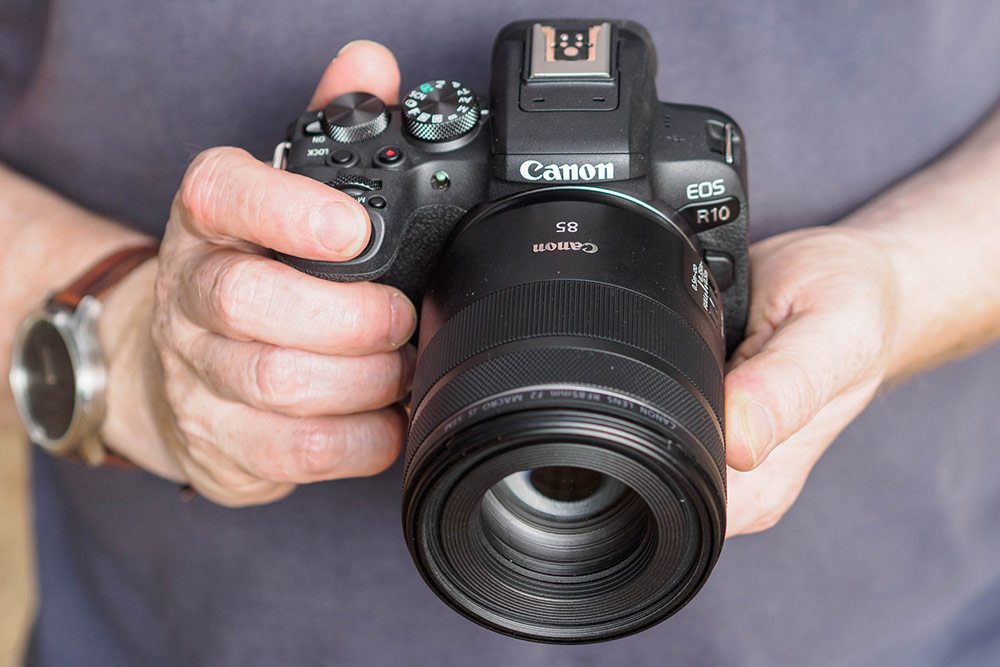
Amateur Photographer verdict
A likeable little camera that ticks most of the boxes we’d expect for an $879 / £999 body. It ain’t flashy, but it gets the job done.- Excellent controls and handling
- Very good value
- Subject-detect autofocus works well
- Again, lack of RF-S lenses
- No IBIS
- Single card slot
Specifications at a glance:
| Sensor | 24.2 MP APS-C (crop sensor) |
| Continuous shooting | 23 fps with electronic shutter |
| Autofocus | Subject detect AF |
| ISO | 100-51,200 (extended) |
| Image stabilisation | No |
| Video | 4K 30p |
Being smaller, lighter and less expensive than the R7, the Canon EOS R10 is designed for enthusiasts with a smaller budget. In the range, it sits a little above the EOS R50 featured earlier in this guide. It’s a little larger, and a little more expensive, but offers a more sophisticated suite of manual controls and a faster burst shooting rate.
Naturally, the specs aren’t quite as good as the R7, but they’re not bad, with up to 23fps available for wildlife and sports photographers. Again, the smaller APS-C sensor is ideal for shooting distant subjects without having to employ super long lenses. You also get 4K video recording, a single UHS-II SD card slot, a 3-inch 1.04m-dot articulating touchscreen and Dual Pixel CMOS AF.
In our full review, we found the EOS R10 to be a likeable, well-handling camera, and an especially good bet for the price. The main forfeits compared to the EOS R7 are the small viewfinder and lack of in-body image stabilisation (IBIS), which for many users will be acceptable trade-offs. A key problem is one we’ve already discussed at length – the poor selection of RF-S lenses for APS-C cameras, but this is common across the range, and as mentioned, can be mitigated by investing in an adapter to be able to use EF-S lenses.
See more in our full Canon EOS R10 review
Best for: Entry-level photographers, travel, best Canon mirrorless under $1000/£1000

BEST BUDGET ALL-ROUNDER
Best budget all-round Canon camera: Canon EOS R6
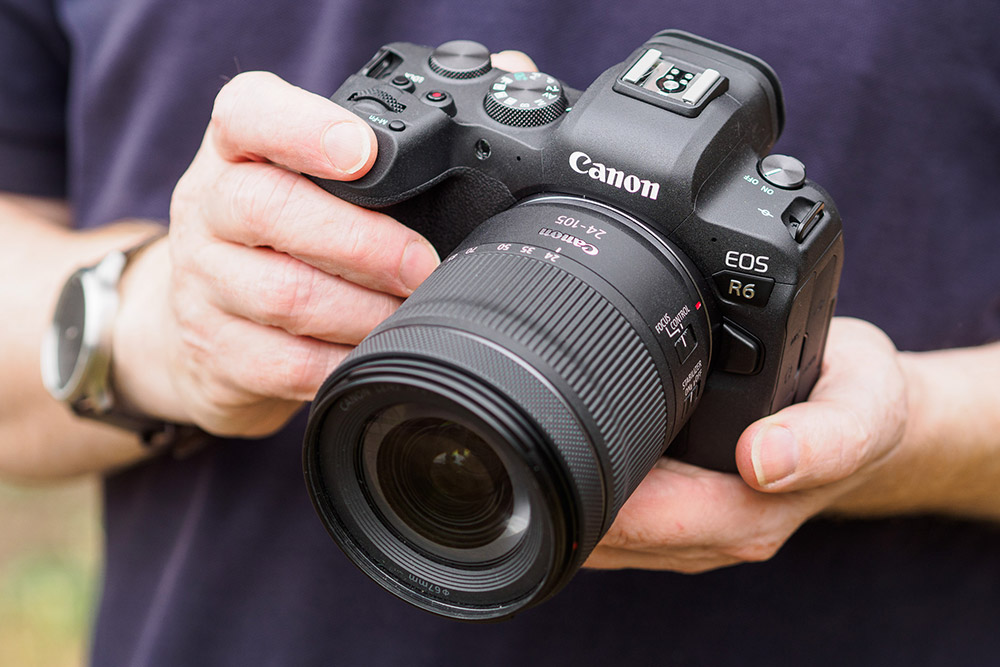
Amateur Photographer verdict
The EOS R6 is a superb camera in its own right that should appeal to many more photographers than its EOS R5 sibling- Does very well at high ISOs
- Effective stabilisation
- Great all-around image quality
- Some video overheating issues
- 20MP might not be enough for some
Specifications at a glance:
| Sensor | 20 MP full-frame sensor |
| Continuous shooting | 20fps with electronic shutter |
| Autofocus | Subject tracking |
| ISO | 50-204,800 (extended) |
| Image stabilisation | 8 stops |
| Video | 4K 60p |
Though since usurped by the Mark II version, the Canon EOS R6 is still a pleasingly affordable route into Canon’s latest mirrorless technology – albeit a second-hand one – and an excellent all-rounder for enthusiasts.
The full-frame sensor offers a good balance between image quality and speed, and a host of other appealing specifications including 4K video, image stabilisation and a well-performing autofocus system. In our review, In our Canon R6 long term review we found the high-ISO performance particularly good, which makes it a great choice for low-light shooting. This is aided by the fact that the sensor has a resolution of 20MP – on the low side for a camera of this type.
As well as the lower resolution sensor, other trade offs are made for the R6 when compared to the higher-value R5. You get a lower resolution viewfinder as well as a smaller, lower resolution screen, but both are still very capable and pleasant to use. You also don’t get a CFExpress Card Slot – but that’s unlikely to be too much of an issue for most users. There is “only” 4K video, as opposed to 8K, but this should only matter to high-end videographers.
The R6 makes a lot of sense for those who photograph a wide range of subject types – but lack the funds for the likes of the R5, or even the R6 Mark II. Now that the newer version has bedded in, second-hand prices on the EOS R6 are looking more tempting than ever.
Read our full Canon EOS R6 review
Best for: all-rounder photographers without a huge budget

Best compact for stills
Best Canon compact for stills: Canon G7X Mark III
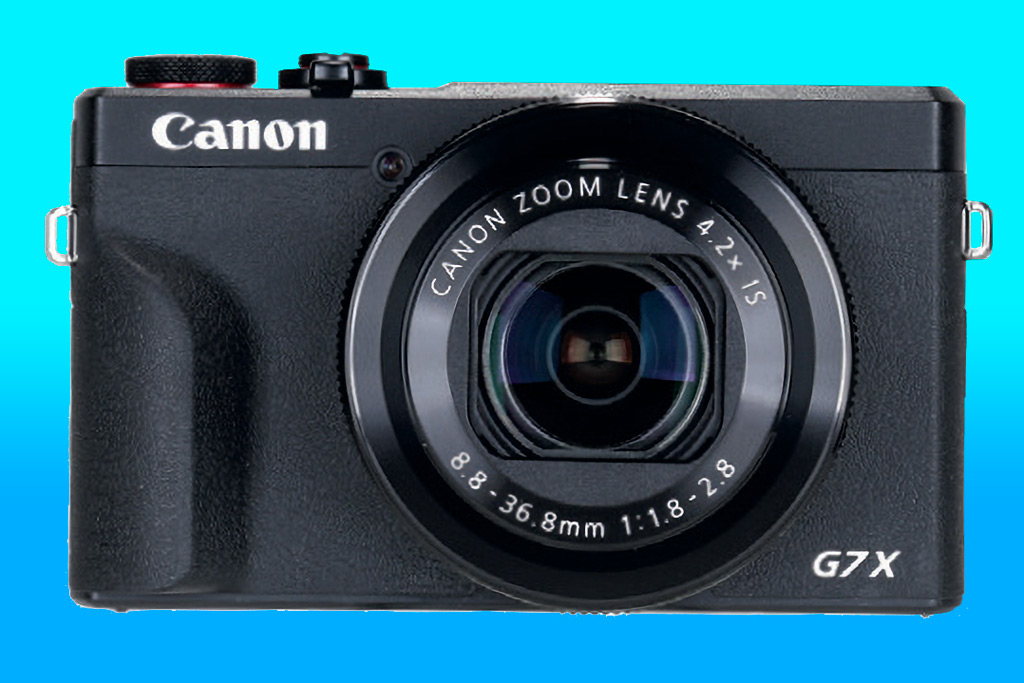
Amateur Photographer verdict
The Canon PowerShot G7X Mark III is a lovely pocket camera that will give you more advanced control and better results than a smartphone.- Very good image quality
- Plenty of useful features
- Small, light and easily pocketable
- Capable of 4K video capture and YouTube live streaming
- Display can be hard to see clearly in bright sunlight
- Touchscreen could be fiddly for larger fingers
Specifications at a glance:
| Sensor | 20.1MP CMOS, 13.2 x 8.8mm (1inch) |
| Continuous shooting | 20fps in AF-S, 8fps with continuous AF |
| Autofocus | 31 AF points |
| ISO | ISO 125-12,800, (ISO 25,600 expanded) |
| Image stabilisation | 3 stops |
| Video | 4K (3840×2160), 30fps |
Although nearly six years since its release, the G7X III is still a pocket powerhouse, and the best compact Canon you’ll find for stills. The 20.1MP stacked CMOS sensor coupled with the Digic 8 processor delivers images far superior to a smartphone. So if you are ready to ditch your handset but don’t want to deep dive into to ins and outs of using a bigger interchangeable lens camera yet, the G7X III could be an ideal upgrade.
It is equipped with a fixed lens that has a 24-100mm equivalent focal range and a bright f/1.8-2.8 variable aperture, letting you compose wide landscapes or zoom in on some distant action.
Thanks to the 3 stops of in-body image stabilisation and three stops of built-in ND filters, the G7X III tackles slow shutter speed shooting remarkably well. It also features 4K video recording at 30fps, but you are limited to only 10 minutes of recording time at this resolution.
Its tiny 105.5×60.9×41.4mm body is packed with other useful features like High-Speed Raw capture that employs the electronic shutter to capture an impressive 30fps. An ideal travel camera or everyday photography companion that easily slips into your pocket and delivers better results than a smartphone.
Read our full Canon GX7 review

Best compact for video
Best Canon compact for video: Canon PowerShot V1

Amateur Photographer verdict
The Canon PowerShot V1 is very capable as a high-end compact camera for video and vlogging. But its ultra-wideangle zoom limits its attraction for general-purpose photography.- Relatively large sensor
- Built-In 3-stop ND Filter
- Optical and Digital Stabilisation
- Wide-angle zoom can be limiting for photos
- Price isn’t very competitive
- Strange stabilisation effects
Specifications at a glance:
| Sensor | 22.3MP 1.4in-type sensor |
| Continuous shooting | 30fps |
| Autofocus | 3431 autofocus points |
| ISO | ISO 100-32,000; ISO 51,200 extended |
| Image stabilisation | 3 stops |
| Video | 4K 30p video (unlimited recording) |
As the V designation suggests, Canon’s latest compact on the market is geared towards video capture. With its extremely wide 16-50mm f/2.8-4.5 equivalent lens, the V1 is clearly designed for video, and especially well suited for vlogging. You can hold it at arm’s length at the widest, 16mm setting and record yourself with a good amount of background included in the frame.
It relies solely on its 3in 1.04m-dot vari-angle touchscreen, as there is no viewfinder, another hint towards whom Canon intended the V1. A nice touch is the added countdown timer, so when filming yourself or someone else, you can factor in a few seconds to settle down for the recording.
The dual pixel autofocus puts in a good performance in terms of tracking both during video and stills capture, and the 3,431 selectable focus points cover the entirety of the sensor. Moreover you get autodetect subject recognition for people and animals
Like other compacts from Canon, the V1 includes a built-in 3-stop ND filter, which makes it ideal for filming with larger apertures while still using slower shutter speeds. A headphone socket is included as well as a windshield which you can mount on the hotshoe. You also have the option to record in C-Log3, allowing for more flexibility in post-production colour grading, and thanks to the built-in fan, overheating won’t be a limiting factor for recording times. But you still need to keep an eye on battery charge and SD card space.
Read our full review of the Canon PowerShot V1
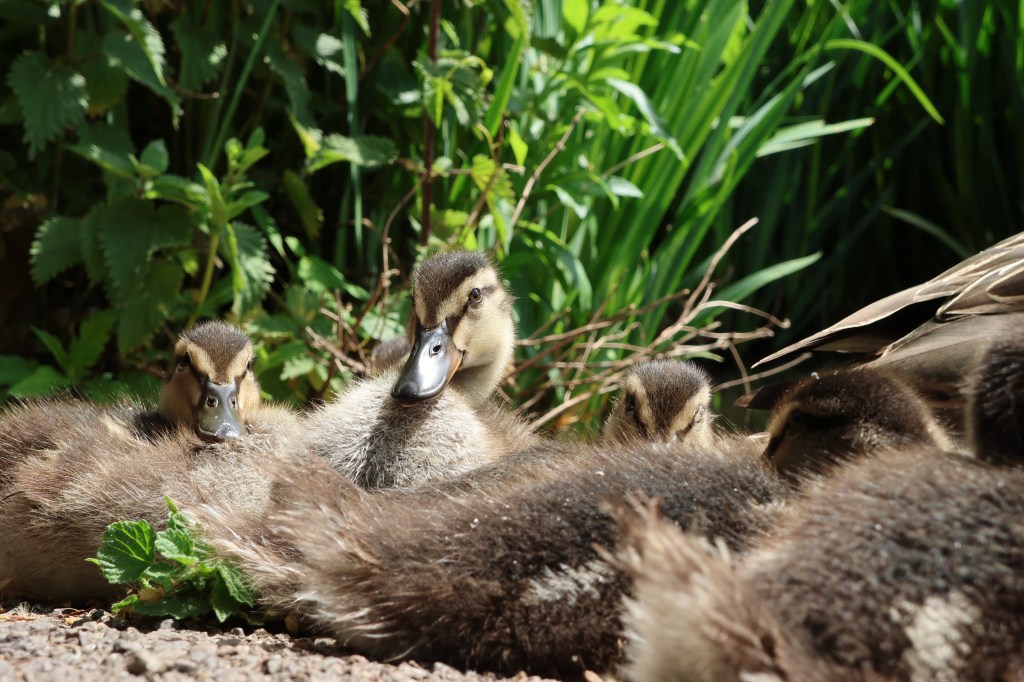
If you choose a Canon camera with interchangeable lenses, then you’ll need to know about the Canon lens mount options:
- RF mount: this is used by all the latest Canon mirrorless cameras including both full frame and APS-C EOS R models. You can use the full-frame lenses on the smaller camera bodies too.
- RF-S mount: this is the mount used by Canon’s new APS-C mirrorless cameras. Physically, it’s the same as the RF mount, but the smaller sensor size benefits from specially designed lenses which carry the ‘RF-S’ designation
- EF-M mount: this is a mount used by Canon’s first-generation APS-C mirrorless cameras, the EOS M series. These cameras and lenses are now discontinued, but you can still find some bargains on the second-hand market.
- EF mount: this is Canon’s DSLR mount. These lenses can also be used on its mirrorless cameras via an adapter.
- EF-S mount: this is a special adaptation of the EF DSLR mount for Canon’s smaller APS-C DSLRs. You can use EF lenses on a camera with an EF-S mount, but not the other way round. You can also use EF-S lenses on a Canon mirrorless camera via an adapter.
How to choose the best Canon camera
Canon make mirrorless cameras, DSLRs, and compact cameras. Of these, the mirrorless camera is the most versatile, as well as the newest, and is what we’d recommend for most photographers and videographers. Picking a Canon mirrorless camera can be a daunting task, particularly if it’s your first. So let’s run through the key specs to consider when choosing the best Canon camera for you.
Sensor and resolution: Canon’s mirrorless cameras contain either a full-frame or an APS-C sensor. Essentially, full-frame tends to give better image quality in a range of situations, especially low light, while APS-C makes for an overall smaller system and can be beneficial for certain subjects such as wildlife. See our guide to full-frame versus APS-C for more on the key differences between the two. Resolution is also worth thinking about – it’s not necessarily true that more pixels are better. Whether you need a very high resolution likely comes down to the type of subjects that you photograph.
Screen and viewfinder: All of the cameras in our list include a rear screen, while most (but not all) include an electronic viewfinder too. Think about whether you would like an articulating or tilting screen (which can be handy for composing from awkward angles, as well as for video). For the viewfinder, pay attention to the resolution and size.
Image stabilisation: Canon’s first mirrorless cameras with in-body stabilisation arrived in 2020 – the EOS R5 and the EOS R6. Since then, the sports flagship EOS R3 has also included it, though you don’t get IBIS with Canon’s APS-C format cameras. Image stabilisation is not essential, since many Canon lenses have IS (Image stabilization) built in too. But it is definitely beneficial for those who prefer to shoot handheld rather than on a tripod.

Frame rate: For photographing fast-moving subjects like sports and wildlife, you need a camera with a fast frame rate. Some cameras in the EOS R and EOS M ranges give you up to 30fps (frames per second). This will be less important to you if you mainly shoot static or near-static subjects, such as landscapes or portraits.
Video: All the cameras on this list can record 4K video. Other video-related specifications to consider include whether a crop is applied to 4K, frame rates and special video modes.
Lens choices: Canon’s two mirrorless lines (R and M) use different lens mounts, and as such, the lenses between them are not interchangeable. Despite being much older, the EF-M lens range for the M series never really took off, there are just 8 available optics. By contrast, there are currently 30 native lenses for RF-mount, though only three are designed specifically for the smaller APS-C models.
You can use the best EF-mount zoom lenses made originally for Canon DSLRs, with either the M or the R mount cameras, via adapters. Take a look at our guide to DSLR vs mirrorless: which is best for more on the differences between the two types of camera.
FAQs
Is Canon EOS M discontinued?
Yes. Canon no longer develops cameras or lenses for the EF-M mount, meaning the EOS M system is effectively dead – hence why we haven’t included it in this guide. You can still buy EOS M cameras and lenses on the second-hand market, and for what it’s worth, some of them are quite likeable cameras, like the nifty EOS M50 Mark II. But for all intents and purposes, the system is finished.
Is it better to buy Canon DSLRs or mirrorless?
While the range of Canon DSLRs still includes some fantastic cameras, we haven’t seen a new Canon DSLR hit the market since 2020. This seems unlikely to change. Canon’s focus on developing its mirrorless range and the system’s obvious advantages are convincing more and more Canon DSLR users to switch to mirrorless. This means for most users, mirrorless is the better buy.
Which Canon camera is best for wildlife photography?
While the objectively correct answer is a professional sports camera like the Canon EOS R1, practically this is not an option for most people. So, we’d say a camera offering a good balance of wildlife-friendly features is the Canon EOS R7, which is much more affordable and punches above its weight with impressive speeds. Plus, its APS-C sensor produces a crop that extends the effective focal length of your lenses.
Do professionals use Canon cameras?
Absolutely. Canon is one of the most popular brands among professional photographers and videographers, along with Nikon and Sony. Canon’s full-frame mirrorless and DSLR cameras are a common sight in the photography pits at pro sports events, and its cine cameras are in demand for professional film and TV productions.
How we test Canon cameras
We test Canon cameras primarily by using them to take photographs and video in a wide range of real-world situations. We evaluate their control layouts and handling, and the usability of their viewfinders and screens. We assess their autofocus across a range of different subjects and shooting scenarios and check their continuous shooting capabilities.
We also examine the effectiveness of their image stabilisation systems, whether that’s in-body image stabilisation (IBIS) or lens-based optical image stabilisation. Last but by no means least, we critically evaluate the image quality, in both JPEG and raw, including resolution, high-ISO noise, and dynamic range. We then take all these factors into account, along with such things as portability and lens systems, and value for money, when giving our final conclusion and score. You’ll find the full breakdown of how each camera has performed in our full reviews where we go into full detail of each Canon camera.
Text by Amy Davies, with contributions from Jon Stapley.
Related reading:
- Have a look at more buying guides here
- The 12 Best Canon EOS Cameras Ever
- The best mirrorless cameras you can buy right now
- Best Canon RF Mount Lenses

